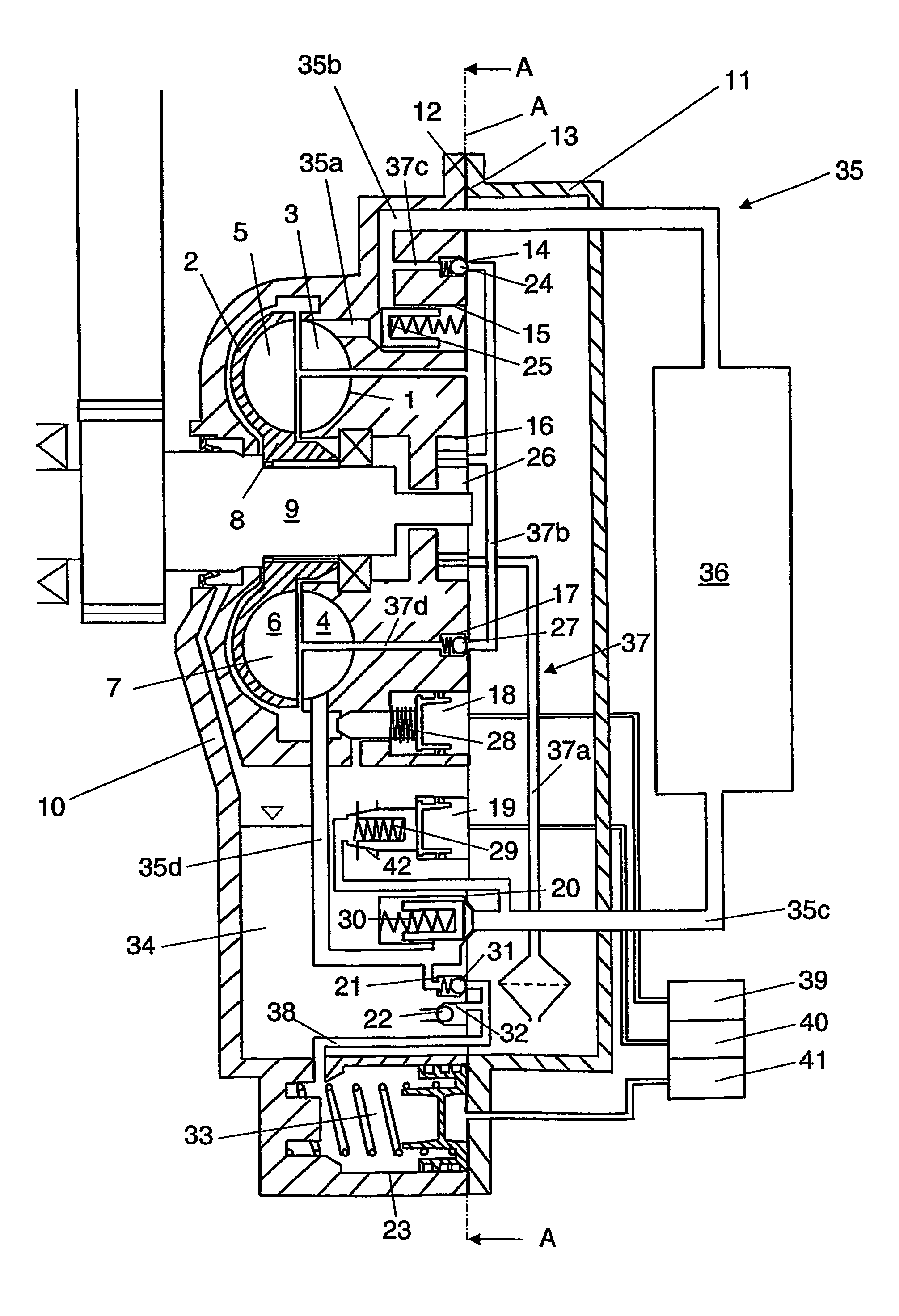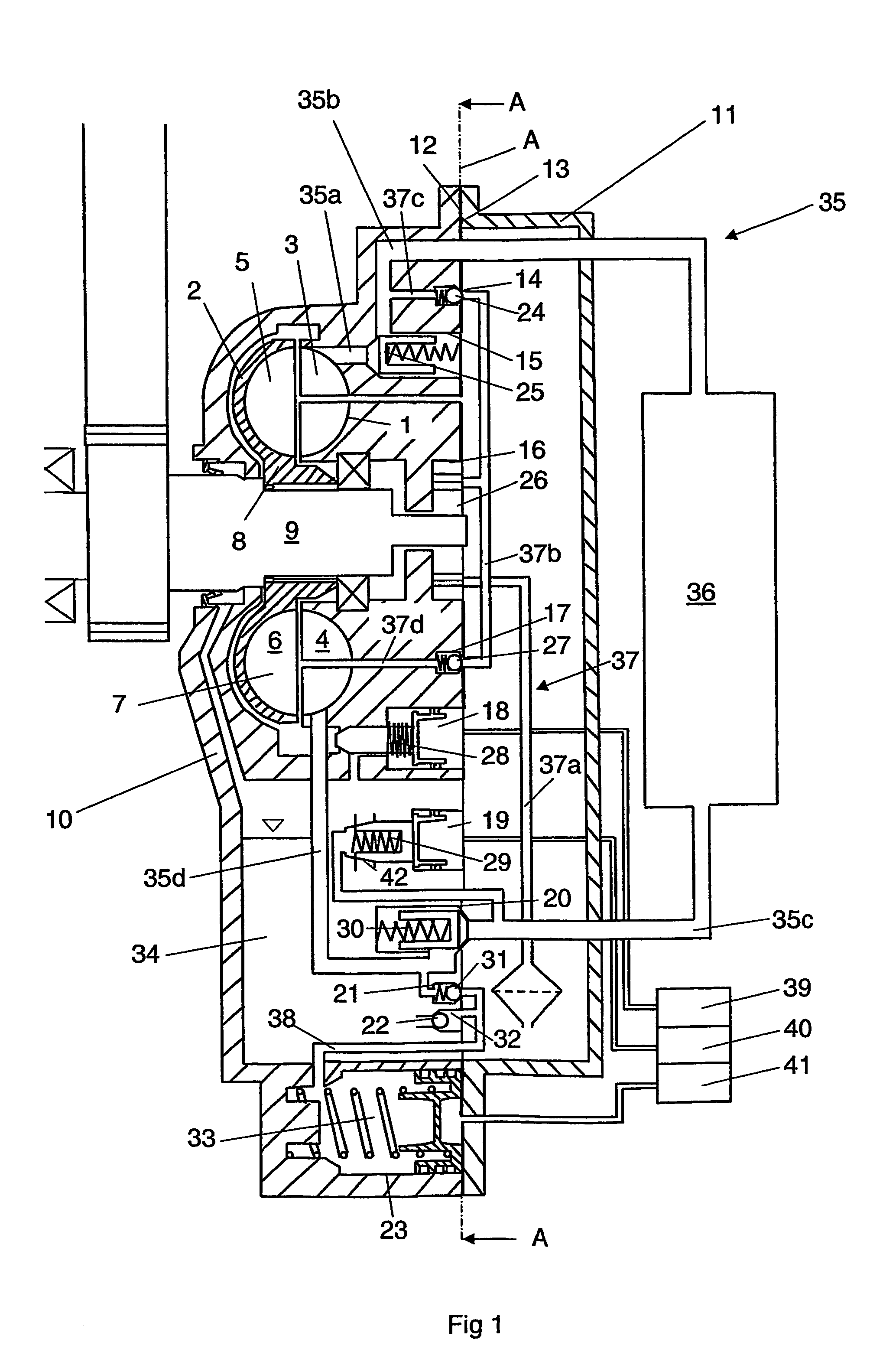Hydrodynamic brake
a brake and hydraulic technology, applied in the direction of braking systems, rotary clutches, fluid couplings, etc., can solve the problems of laborious and relatively complicated fitting and servicing of components of conventional retarders, and achieve the effects of simple design, low cost and simple structur
- Summary
- Abstract
- Description
- Claims
- Application Information
AI Technical Summary
Benefits of technology
Problems solved by technology
Method used
Image
Examples
Embodiment Construction
[0010]FIG. 1 depicts a hydrodynamic brake in the form of a retarder of a powered vehicle. The retarder comprises a stator 1 and a rotor 2. The stator 1 has an annular shell 3 with a multiplicity of blades 4 arranged at uniform spacing along the annular shell 3. The rotor 2 is of corresponding design with an annular shell 5 which incorporates a multiplicity of blades 6 likewise arranged at uniform spacing along the annular shell 5. The respective shells 3, 5 of the stator 1 and rotor 2 are coaxially arranged with respect to one another so that they together form a toroidal space 7. The rotor 2 incorporates a shaft portion 8 which is firmly connected to a rotatable shaft 9. The rotatable shaft 9 is itself connected to an appropriate driveshaft of the vehicle's driveline. The rotor 2 will thus rotate together with the vehicle's driveline.
[0011]The retarder depicted in FIG. 1 incorporates a housing which comprises a first element 10 and a second element 11. The first element 10 incorpor...
PUM
 Login to View More
Login to View More Abstract
Description
Claims
Application Information
 Login to View More
Login to View More - R&D
- Intellectual Property
- Life Sciences
- Materials
- Tech Scout
- Unparalleled Data Quality
- Higher Quality Content
- 60% Fewer Hallucinations
Browse by: Latest US Patents, China's latest patents, Technical Efficacy Thesaurus, Application Domain, Technology Topic, Popular Technical Reports.
© 2025 PatSnap. All rights reserved.Legal|Privacy policy|Modern Slavery Act Transparency Statement|Sitemap|About US| Contact US: help@patsnap.com


